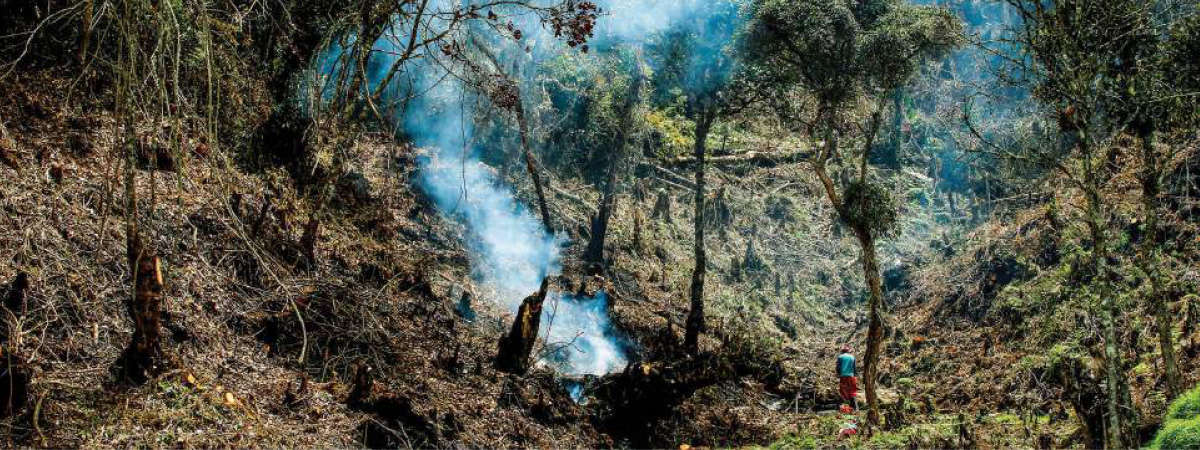Even though biodiversity provides enormous value to humanity and is essential to achieve the SDGs, global biodiversity trends indicate a rapid loss of both the area and the quality of natural ecosystems. Possibly even more ecosystems will collapse as we cross a range of local and global tipping points for climate and nature, described as “planetary boundaries”10 . Crossing these boundaries not only a concern just for the environment; it brings a risk that Earth will become much less hospitable, leading to disruptions in the world economy and people’s lives11. The exceptionally rapid loss of biodiversity indicates the planet is witnessing its sixth mass extinction wave12. The loss of biodiversity and ecosystems is often irreversible; once a species is forced into extinction by human activity, it is gone forever.
The Millennium Ecosystem Assessment (the “Assessment”) clearly links the state of ecosystems (and ecosystems services) with human well-being. In doing so, it counters the false perception that development priorities are inherently at odds with the sustainable management of ecosystems and biodiversity. The Assessment states that all ecosystems have been transformed by human actions, causing the loss of 35 percent of mangroves, 20 percent of coral reefs and around half of tropical forests.13 Moreover:
- Loss of tropical forest remains a cause for concern, having been around 0.8 percent per year during 1981 and 199014 and estimated to continue at 2 percent per year going forward.15
- Projections show that a very large fraction of species will be “committed to extinction” in the 21st Century due to conflicting land use and climate change. The IUCN Red List contains (as of September 2018) 26,000 threatened species or 27 percent of all assessed species, including: 41 percent of amphibians, 33 percent of reef-building corals, 25 percent of mammals, 13 percent of birds, and 34 percent of conifers.16 The average rate of vertebrate species loss over the last century is up to 100 times higher than the background rate.17
- Continued overfishing has a severe impact on marine biodiversity. It reduced the total biomass of predator fish species by 52 percent between 1970 and 2000.
- Invasive species have contributed to more than half of the animal extinctions for which the cause is known.18
To manage nature more effectively, it is essential to act upon the drivers of biodiversity loss and link them with policy, economic incentives and finance solutions. Identifying these drivers (explained in Chapter 3) is instrumental to the design of finance solutions. Some drivers, such as excessive application of fertilizers or over-extraction of water, are direct and straightforward, and may be resolved by greening subsidies or reforming certain taxes. Others, such as colonization by non-native invasive species, impacts of climate change and landscape fragmentation, are more indirect, requiring a combination of interventions.
Drivers of Biodiversity Loss in Colombia

In Colombia, conservationists identified key drivers of biodiversity change within each region of the country. Positive drivers of change included a suite of public, private and community protected areas and the creation of soil conservation districts. Negative drivers of change across all regions included human-caused forest fires;illegal logging (causing forest fragmentation and incursions of invasive species); illegal mining;expansion of the agricultural frontier;illegal encroachment and conversion within protected areas;infrastructure development;indiscriminate use of agrochemicals and excessive mechanization, leading to losses in soil quality;and negative impacts from palm oil plantations.
